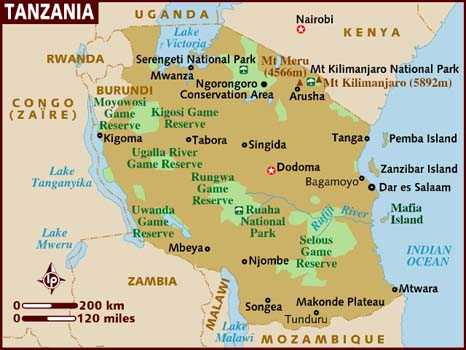USDA Foreign Agricultural Service/Dar es Salaam forecasts that Tanzania’s coffee production will decrease to 1.15 million bags in the marketing year MY 2016/2017 from 1.2 million bags in MY 2015/16 is due to the biennial bearing cycle.
Ending stocks are expected to decrease by 50,000 bags compared to MY 2015/16. The Government of Tanzania (GOT) continues to implement its coffee sector strategic plan with the main objective of doubling production by 2021.
Production
Coffee accounts for about five percent of Tanzania’s total exports by value and generates earnings averaging US$100 million per year.
The industry provides direct income to about 400,000 smallholders who produce 90 percent of the Tanzania’s coffee.
Although there is an expansion of new farms and improvement of agronomic practices, erratic weather due to climate change remains an underlying challenge to sustainable coffee production in Tanzania.
The Government of Tanzania (GOT) continues to implement its strategic plan (2011-2021) by supporting a coffee production expansion program that involves increasing yields in existing farms and facilitating the private sector to start new farms.
In the MY 2016/17, FAS/ Dar es Salaam forecasts a decrease in production from 1.2 million bags in MY 2015/2016 to 1.15 million bags due to the biennial bearing cycle.
Consumption
Most of Tanzania’s coffee is exported and local consumption is estimated at seven percent of the total production. Tanzania Coffee Board (TCB) estimates that domestic coffee consumption is growing at an average of between 1.5 and 2 percent per year due to a coffee drinking culture that is gradually taking root in the urban and semi-urban areas
Stocks
The ending stocks for the MY 2016/17 are expected to decrease by 50,000 bags compared to the MY 2015/16 due to decreased production. Coffee stocks are held by small-scale farmer’s cooperatives, farmers groups, traders, exporters, and large scale coffee growers.
Policy
As part of the country’s Agricultural Sector Development Strategy (ASDS), the GOT launched the Coffee Industry Development Strategy (CIDS) in 2011. The overall goal of CIDS is to improve incomes across the entire value chain by increasing coffee production and quality. GOT forecast coffee production to reach 100,000 tons by 2021. According to the Tanzania Coffee Board (TCB) the following has been achieved under the program:
a) Improvement of delivery of extension services
In an effort to improve the delivery of extension services, TCB in partnership with coffee industry stakeholders have concluded the preparation of a new coffee curriculum to be used by all institutions delivering extension services to coffee farmers. The aim of the harmonized curriculum is to ensure common standards by extension service providers.
b) Improving the business environment
In 2013 GOT revised the regulations that guide operations of the coffee industry and included new measures to remove opportunities for conflicts of interest in the industry.
c) Formation of stakeholders forums
Following the amendment of the Coffee Act in 2009, coffee industry stakeholders have formed stakeholder’s forums which convene annually and deliberate issues of common interest for the benefit of the sector.
d) Access to inputs
In 2012 TCB in partnership with coffee industry stakeholders established the industry funded Coffee Development Fund (TCDF). The main objective of the fund is to facilitate the implementation of shared functions as agreed by stakeholders from time to time including access to inputs by smallholder coffee farmers.
Marketing
About two-thirds of coffee produced in Tanzania is mild Arabica, and the rest is hard Arabica and Robusta. Coffee is grown in the northern, western and southern areas of the country and marketing is centralized via an auction in Moshi.
Mild Arabica are wet processed, while Robusta are dry processed. Pre-auction coffee marketing is undertaken through three channels:
a) Farm gate market
At this level of the market, producers sell their coffee either to licensed coffee buyers, cooperatives, farmer groups or associations. Coffee which is sold in this market is in the form of wet processed parchment or dried cherry. Buyers then take the coffee for dry and Milling to produce clean coffee (green beans).
b) Coffee auction
Coffee is sold to exporters by TCB at the coffee auctions in Moshi; every Thursdays during the season (usually 9 months) where buyers buy coffee for export. Most of the prominent exporters are affiliated with the multinational companies which sell coffee to roasters in consuming countries. Prices in this market are generally set in reference to New York Futures market for Arabica coffee and London Futures market for Robusta coffee. Most of the coffee solid in this market is brought by private coffee buyers and other farmers’ organizations
c) Direct export market
Producers of premium top grade coffees that are able to establish direct contact with buyers overseas are allowed to by-pass the auction and sell their coffee directly. The Tanzania Coffee Board is mandated to approve the sale contract after being satisfied that the price offered is higher compared to the coffee sold to the auctions.
Trade
The main export destinations for Tanzania’s coffee are Japan, Italy, United States, Germany, Belgium and Finland. Tanzania also exports soluble coffee that is manufactured at a plant in Bukoba for its neighboring countries.
















